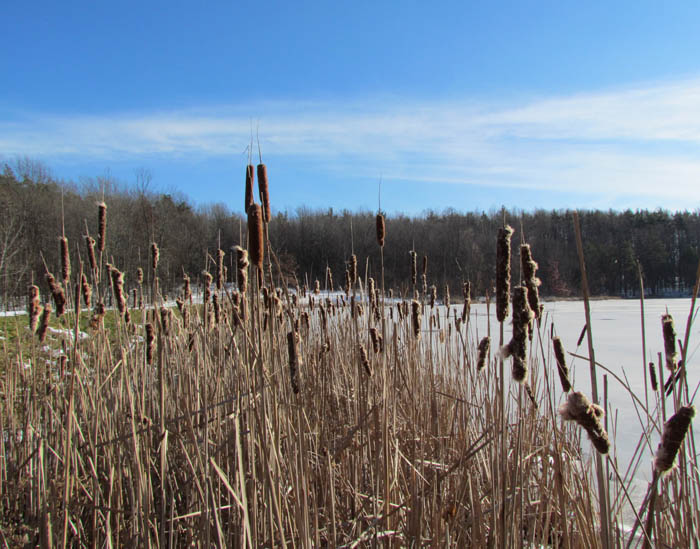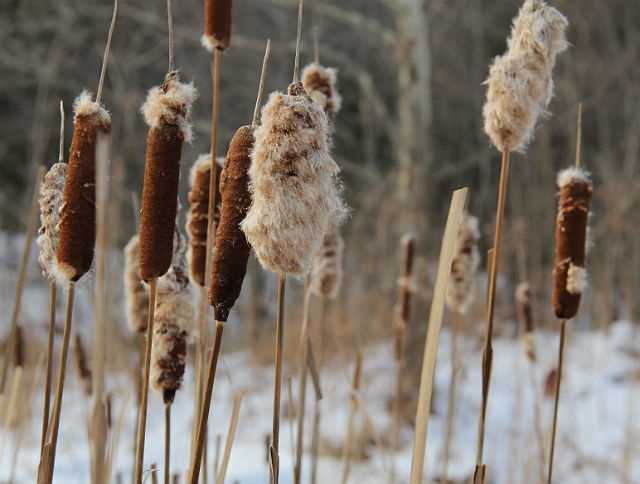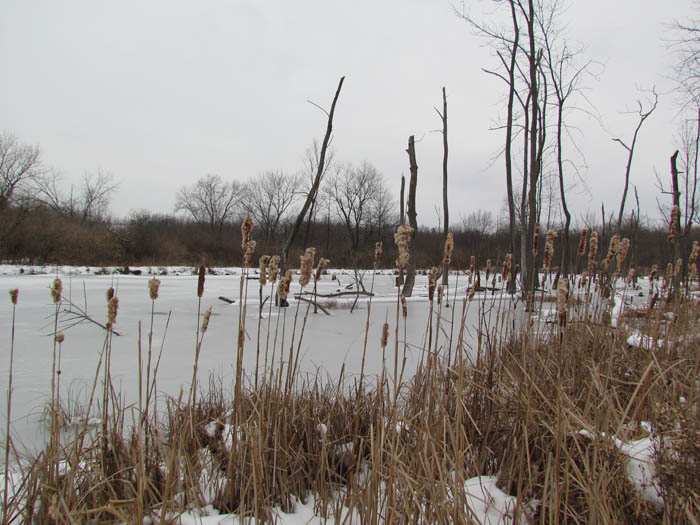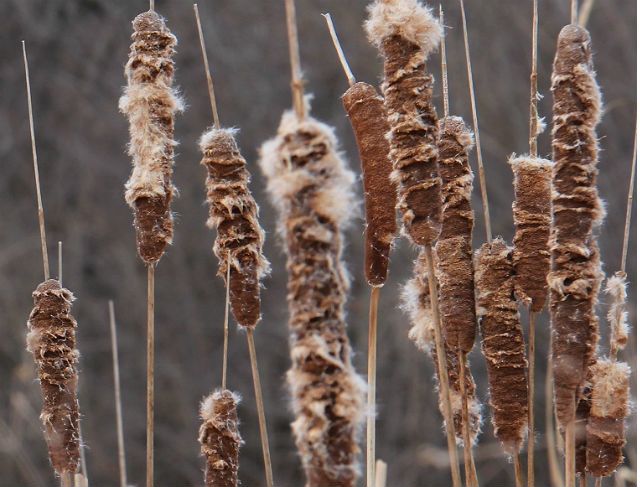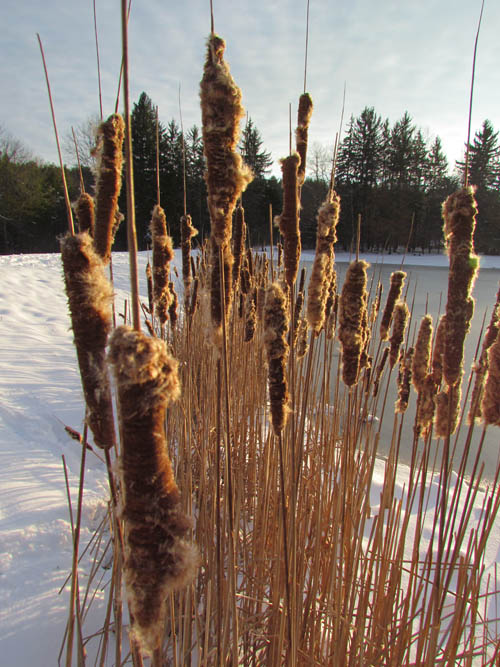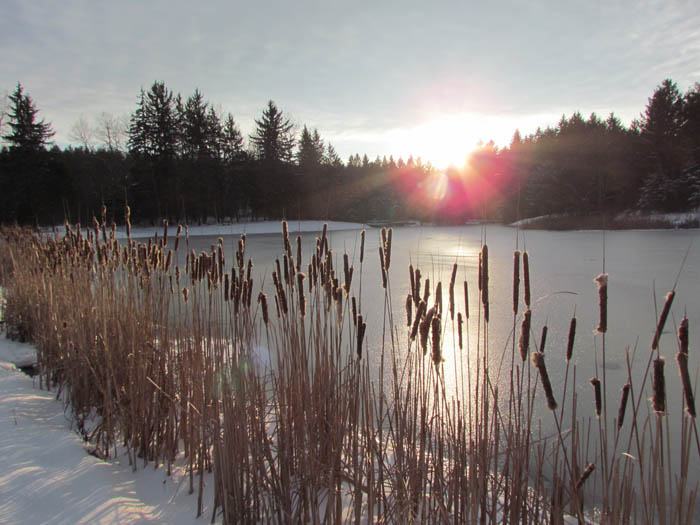Cattails are one of the most common and easily identified of our water-loving plants. Most people are familiar with the long green leaves and hotdog-shaped brown flower spikes.
Cattails grow along lake edges and in marshes, often in dense colonies. The plants are often home to many insects, birds and amphibians.
They are a food source for Canadian geese, muskrats, insects and pond snails. Many birds find the soft texture of the seeds appropriate for lining their nests.
The Cattail’s flower has a brown, cylinder-shaped section with a yellow spike and blooms from May to August. In Autumn, the brown cylinder bursts, releasing the cotton-like seeds into the wind.
For centuries its dried leaves have been used for weaving chair bottoms, mats and baskets. The roots are a edible (I’ve eaten them many times) and nutritious (containing more starch than potatoes and more protein than rice).
Despite all its uses to people and wildlife, sometimes this plant is simply nice to look at; it is often featured in autumn-themed floral arrangements.

